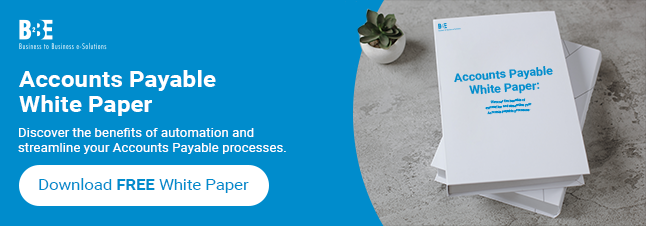The AP (accounts payable) process is a critical part of any business’ financial operations, ensuring that suppliers and vendors are paid accurately and on time. However, inefficiencies in this process can lead to late payment fees, strained supplier relationships, and errors in financial reporting. Here’s how the accounts payable process can be improved.
How To Improve The AP (Accounts Payable) Process
1. Automate Invoice Processing
Manual invoice processing is time-consuming and prone to errors. Automating this process using accounts payable software can drastically reduce the time spent on data entry and minimise mistakes. Automated systems can capture invoice data, match it with purchase orders, and route it for approval with minimal human intervention. This not only speeds up the process but also ensures accuracy, reducing the likelihood of discrepancies that can lead to delayed payments.
下面请观看我们的视频综述:
2. Implement Invoice Matching
Invoice matching is another crucial step in the accounts payable process, ensuring that the details on the invoice match the purchase order and goods receipt. Implementing a robust three-way matching system can help catch errors early, such as discrepancies in quantities or prices. This process helps in verifying that the goods or services billed have been received as ordered, preventing overpayments or fraudulent invoices.
3. Optimise Approval Workflows
Inefficient approval workflows can cause delays in the accounts payable process, leading to late payments and potential fees. By optimising these workflows, you can ensure that invoices are reviewed and approved promptly. Consider setting up automatic reminders for approvers and creating a tiered approval system where lower-value invoices are approved faster. Streamlining approval workflows not only reduces processing time but also minimises the risk of late payments.
4. Use Early Payment Discounts
Many suppliers also offer discounts for early payments. Taking advantage of these discounts can lead to significant savings for your business. Implementing a strategy to identify and prioritise invoices with early payment discounts can help you capitalise on these opportunities. This requires efficient processing and approval workflows to ensure payments are made within the discount window.
5. Improve Vendor Communication
Clear and consistent communication with vendors can prevent misunderstandings and errors in the AP process. Establishing a good relationship with your suppliers and keeping them informed about payment statuses can therefore help avoid disputes. Regular communication ensures that both parties are on the same page regarding payment terms, delivery schedules, and any potential issues that could arise.
6. Monitor Key Metrics
To continuously improve the AP process, it’s essential to monitor key performance indicators (KPIs) such as invoice processing time, payment accuracy, and the percentage of invoices paid on time. Regularly reviewing these metrics allows you to identify bottlenecks and areas for improvement. By focusing on these metrics, you can make data-driven decisions that enhance the efficiency of your AP process.
Conclusion
In conclusion, improving the AP process involves automating tasks, optimising workflows, and maintaining clear communication with vendors. By focusing on these areas, businesses can reduce errors, avoid late payment fees, and even take advantage of early payment discounts, ultimately leading to a more efficient and cost-effective AP process.
Learn more about B2BE’s Accounts Payable solution.
About B2BE
B2BE delivers electronic supply chain solutions globally, helping organisations to better manage their supply chain processes, providing greater levels of visibility, auditability and control. We’re driven by a passion for what we do, inspired by innovation, and underpinned by a wealth of knowledge. With over 20+ years of experience, the B2BE teams operate worldwide.
欲了解更多信息,请访问www.b2be.com。

